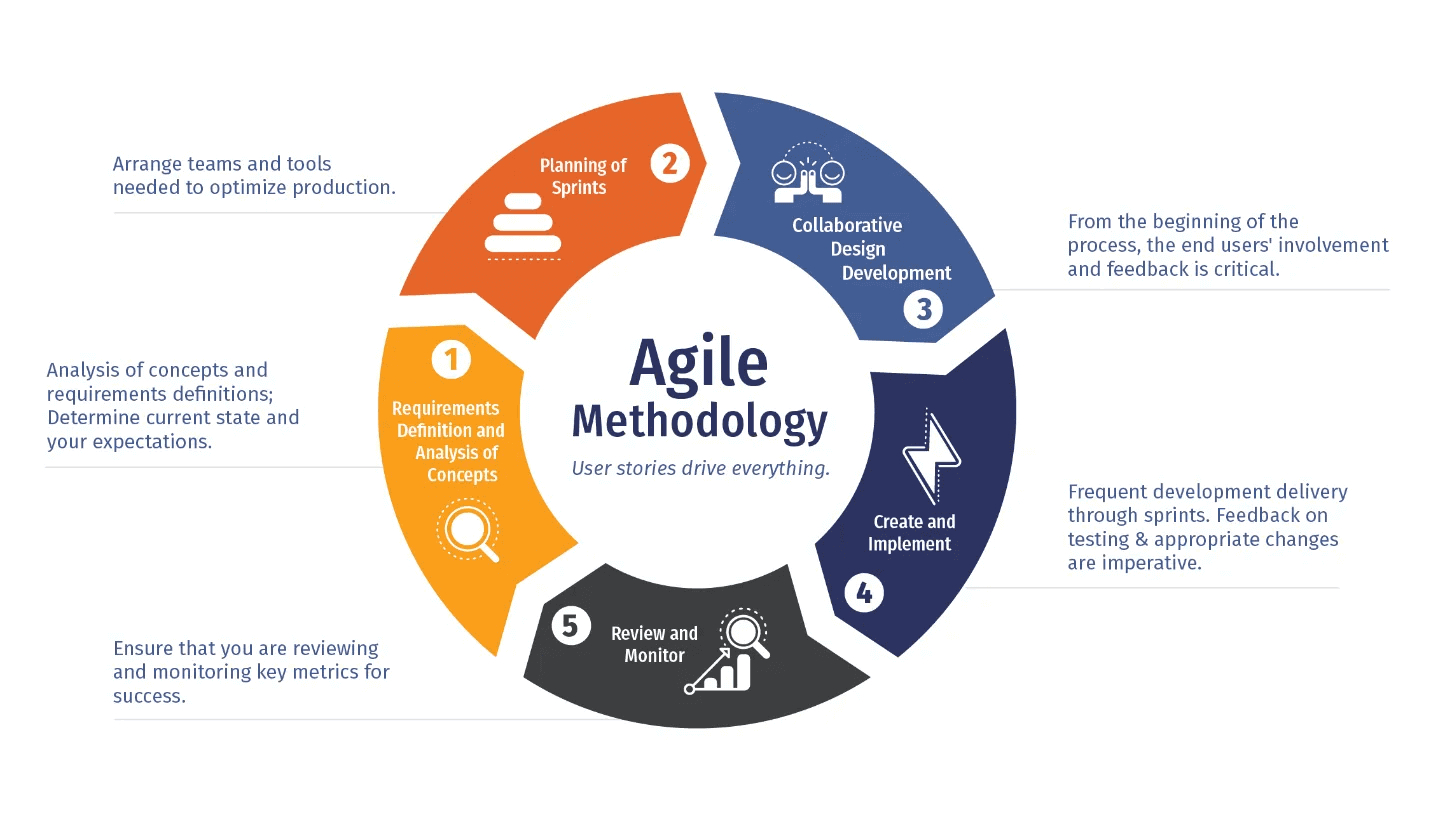What is Agile in the design process?
Back in the 1990s, agile development was simply a way for developers to manage their projects. Today, agile has become much more than that. It has permeated various types of companies, groups, and professions.
One of the most important fields affected by this method is the design process. Nowadays, companies all around the globe use it as a guideline for establishing how their product should appear and feel. This framework is called "Agile design".
We’ll take a closer look at how your team could incorporate agile principles into their design processes.
Before we get started, let me give you an overview of Agile.
Agile is a team-based approach to managing change. It helps organizations create adaptive teams capable of adapting to continuous change. It was created to address the shortcomings of the Waterfall methodology, which had its own set of flaws.
Iterative development is a key part of agile methodologies. It allows teams to continuously improve their products by testing new ideas, concepts, and features. More important than anything else, team members can decide which changes need to be implemented on each short iteration and feedback loop. Therefore, the development cycle is fast and logical—it addresses the most urgent issues first.
For a very long period, designers have not seen themselves as an iterative process; they've always thought of their job as one of finalizing something. Designing for high-fidelity prototypes can often lead to starting to design right away. Poorly thought-out solutions were often created without adequate consideration for users' needs.
On the other hand, agile development is an iterative approach where each iteration consists of several steps:
Understand, Research, Sketch, Design, Prototype, Test, and Refine
With this approach, designers can create products that aren't just "good enough." They're able to iterate quickly and solve important problems. As a result, they can deliver better products and boost customer satisfaction. It's okay if things don't go according to plan. Team members need to embrace the unknown. They must accept that there are many things they don't know yet. As they continue designing, these questions will be answered accordingly. So that they can constantly make small, yet very rational, decisions.
What is the design thinking process?
As well as an idea, design thinking is also considered a process for solving complex problems. Initially used by designers to help them create products, the practice of using "human-centred" methods to solve problems has become an important part of innovation in every industry. This method encourages core concepts like empathy for your audience, challenging assumptions, generating new solutions, and rethinking existing issues. It's most useful for tackling problems that are abstract or vague.
Probably similar to agile development, here are the phases of the design thinking process:
Emphasize, Define, Ideate, Prototype, and Test
How can agile and design thinking work together?

It's easy to think that design thinking is similar to Agile development. Both emphasize the importance of the end-user’s point of view, prototyping, multiple iterative cycles, and small feedback loops. Agile development emphasizes the importance of developing the best possible solution. Design thinking is best for solving the "Why?" question.
Each team has its unique way of working, and many use methods that they've found effective in the past. The amount of thought you put into designing your workflow depends on the kind of work you do and which team members you collaborate with. However, here is one example showing how agile and design thinking can come from one another.
Design thinking process + Scrum meetings
If your team is currently using Scrum, then transitioning to this approach shouldn't be too difficult. The purpose of using Scrum for the prototypal stage of the design thinking process is to help teams get their ideas out into the world quickly so they can evaluate them. After having created an idea, translate it into concrete tasks for your backlog. Using your next sprint to develop your prototype and test it out.
After the sprint review and retrospective session, if you find that your solution hasn't been effective enough for the end user's needs, then you can go back to the design stage again. If everything works out, you can plan for future sprints and refine the solution. Design thinking fits into scrum planning meetings as a way to check whether your process is working well or not.
This method can be effective for small businesses just starting and large companies looking to improve their performance. Trying something out even if you don't know whether it will be successful could lead to new levels of innovative thinking in your company.